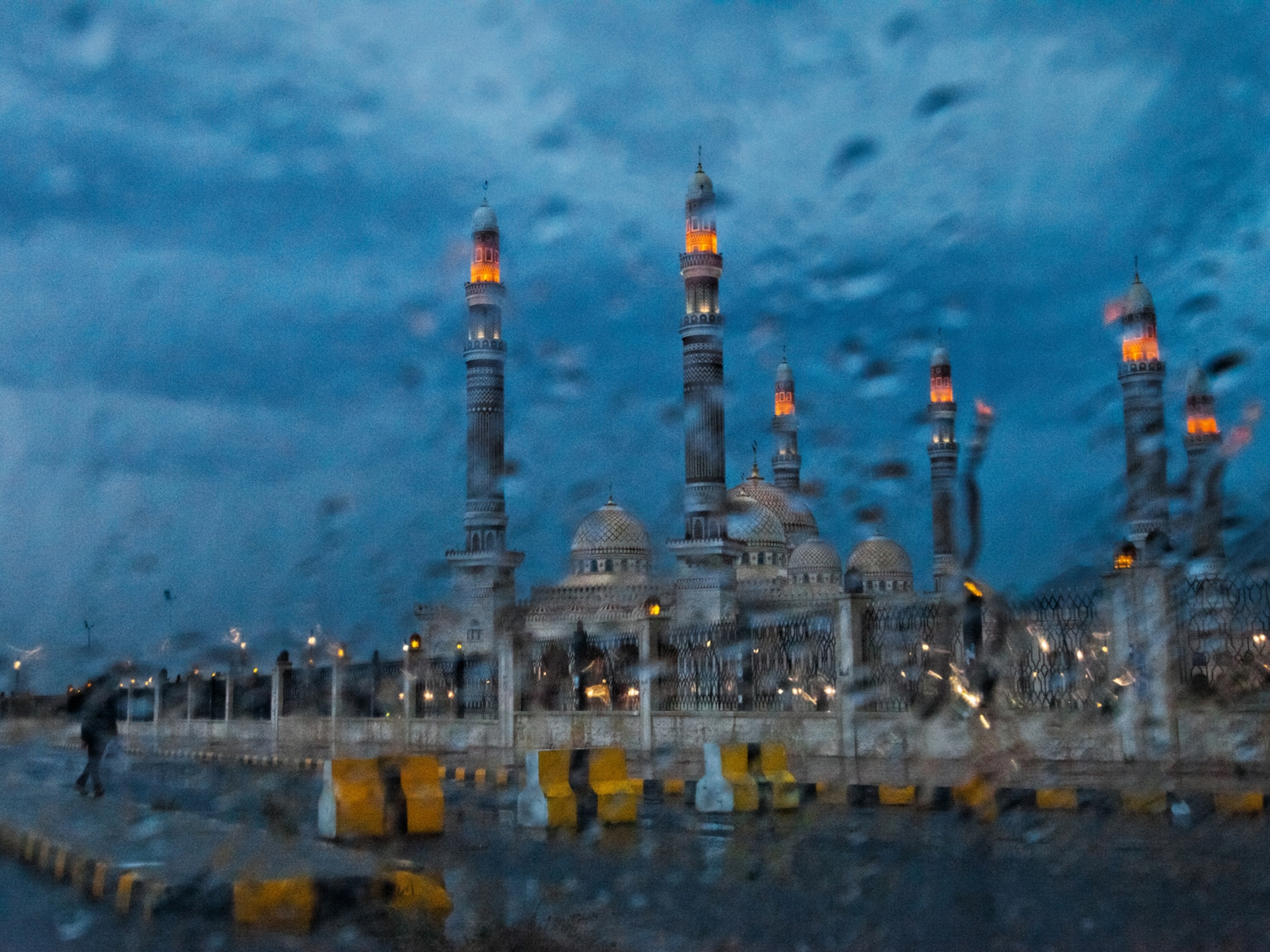









The Photos Syrian Refugees Carried
Photographer Muhammed Muheisen documents the most precious luggage of Syrian refugees: pictures of their lives before the war.
Heading into war—in Tim O’Brien’s Vietnam War novel The Things They Carried—soldiers packed letters, bibles, and soap. Coming out of war—in photographer Muhammed Muheisen’s series “Memories from Syria”—refugees clutched photographs.
In refugee camps across Greece, Muheisen, the Associated Press chief photographer for the Middle East, asked Syrians to see the photographs they took on their thousand-mile journey. They were tucked into wallets and wrapped in plastic bags. There were stacks of headshots and finger-nail sized portraits cropped for safekeeping. The pictures showed weddings, family vacations, and children now scattered across Europe.
One 55-year-old father from Aleppo held a photograph of his two daughters, one now buried in Syria. “The way he held it I could tell he was touching the skin of his daughter,” Muheisen says. Another refugee from Aleppo, Rustum Abdulrahman, said he shrunk his wife's picture to "as small as possible so no matter what it won't be damaged and I will never lose it."
Muheisen wanted to document the items Syrians had taken from home, but few people had many tangible possessions left. “Almost everyone I met had a photograph with them,” he says. Before he asked to see them, he drank tea and heard his subjects' stories. The photographs had near-holy status, and viewing them prompted laughter and tears from a past life. “Photographs are the only physical moment from the past that we carry in the present.”
For the Syrians in refugee camps north of Athens, there are few options. They have been battling the freezing winter in small container shelters with bunk beds and electric heaters that melt from overuse. Many are waiting for word on their asylum cases, unable to travel into Western Europe after borders on the route from Greece were shut in 2015. There's little to do, so the camps' residents pass their days by greeting neighbors, and, of course, sharing memories.
For Muheisen, who continues to photograph the refugee journey, their story doesn't end in a camp in Europe. “These people are not just numbers or Syrians or refugees,” he says. “They have names and stories. They used to have homes, they used to have lives. Now they’re just called migrants.”
Related Topics
You May Also Like
Go Further
Animals
- This ‘saber-toothed’ salmon wasn’t quite what we thoughtThis ‘saber-toothed’ salmon wasn’t quite what we thought
- Why this rhino-zebra friendship makes perfect senseWhy this rhino-zebra friendship makes perfect sense
- When did bioluminescence evolve? It’s older than we thought.When did bioluminescence evolve? It’s older than we thought.
- Soy, skim … spider. Are any of these technically milk?Soy, skim … spider. Are any of these technically milk?
- This pristine piece of the Amazon shows nature’s resilienceThis pristine piece of the Amazon shows nature’s resilience
Environment
- This pristine piece of the Amazon shows nature’s resilienceThis pristine piece of the Amazon shows nature’s resilience
- Listen to 30 years of climate change transformed into haunting musicListen to 30 years of climate change transformed into haunting music
- This ancient society tried to stop El Niño—with child sacrificeThis ancient society tried to stop El Niño—with child sacrifice
- U.S. plans to clean its drinking water. What does that mean?U.S. plans to clean its drinking water. What does that mean?
History & Culture
- Meet the original members of the tortured poets departmentMeet the original members of the tortured poets department
- Séances at the White House? Why these first ladies turned to the occultSéances at the White House? Why these first ladies turned to the occult
- Gambling is everywhere now. When is that a problem?Gambling is everywhere now. When is that a problem?
- Beauty is pain—at least it was in 17th-century SpainBeauty is pain—at least it was in 17th-century Spain
- The real spies who inspired ‘The Ministry of Ungentlemanly Warfare’The real spies who inspired ‘The Ministry of Ungentlemanly Warfare’
Science
- Here's how astronomers found one of the rarest phenomenons in spaceHere's how astronomers found one of the rarest phenomenons in space
- Not an extrovert or introvert? There’s a word for that.Not an extrovert or introvert? There’s a word for that.
- NASA has a plan to clean up space junk—but is going green enough?NASA has a plan to clean up space junk—but is going green enough?
- Soy, skim … spider. Are any of these technically milk?Soy, skim … spider. Are any of these technically milk?
- Can aspirin help protect against colorectal cancers?Can aspirin help protect against colorectal cancers?
Travel
- What it's like to hike the Camino del Mayab in MexicoWhat it's like to hike the Camino del Mayab in Mexico
- Is this small English town Yorkshire's culinary capital?Is this small English town Yorkshire's culinary capital?
- This chef is taking Indian cuisine in a bold new directionThis chef is taking Indian cuisine in a bold new direction
- Follow in the footsteps of Robin Hood in Sherwood ForestFollow in the footsteps of Robin Hood in Sherwood Forest




